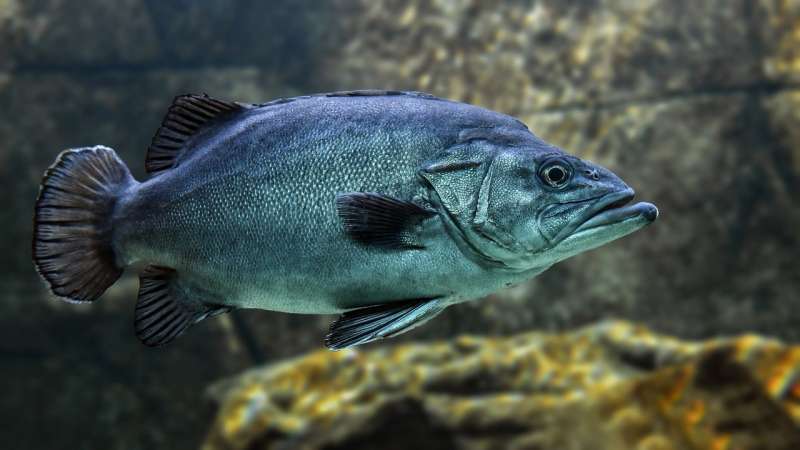Credit: CC0 Public Domain
Two major global environmental issues are food contamination and waste disposal. Professor Wong Ming-hung, Advisor (Environmental Science), and Dr. Brian Man Yu-bon, Assistant Professor, at the Department of Science and Environmental Studies at The Education University of Hong Kong (EdUHK) have a solution for both.
Contamination and waste disposal are particularly relevant to Hong Kong, which ranks second in per capita seafood consumption in Asia and where, in 2018, over 1.5 kg of waste was sent to landfill sites each day. Eating fish and seafood has important health benefits. They are recognized by the Food and Agriculture Organization of the United Nations as being important for optimal brain and neurodevelopment in children, as well as lowering the risk of coronary heart disease among adults.
Health and environmental risks
However, contamination can bring along health and environmental risks. This doesn't merely come through polluted seas and rivers: it can also be present in the feed used in fish farms, which provide 47% of the fish on our plates. In response to rising fish feed production costs around the world, farmers look for alternative sources of feeds, such as trash fish, fishmeal, animal and grain by-products. Some also travel further afield to find lower prices, meaning longer transport and storage time. This can result in spoilage, as well as fungal and bacterial contamination. Added to that is mercury pollution, which because of human industrial activity is now 450% higher than natural levels, according to the United Nations Environment Program. The result is greater risk of contaminants causing fish to be poisoned, which can be transmitted to humans.
These factors, along with the equally important aim to help ease pressure on existing landfill sites, have led Professor Wong and Dr. Man to develop a cleaner, cheaper fish feed using food waste. "We started off with fish which were low in the food chain, such as grass carp and gray mullet," explains Professor Wong. "They have lower nutritional requirements." Initial work began on pellets for pond fish back in 2009, with funding from Hong Kong's Environment and Conservation Fund, followed by a grant from the Innovation and Technology Fund in 2015 for pellets for inland fish.
Getting to market
The pellets were tested in specially made ponds, alongside another where fish were given commercial feed. Once trials were completed, the research project entered the Knowledge Transfer (KT) phase to scale up the process, transforming an innovation from lab scale to mass-production standard to make it marketable. "Knowledge Transfer is a two-way process to apply university research to society. Partnership is key," says Dr. Stephen Chow, Director of KT at the University. This also means building awareness and finding appropriate manufacturers and distributors, as well as obtaining intellectual property protection. The University's KT Sub-office promoted the project on various occasions, including public events, innovation exhibitions and trade fairs in Hong Kong, the Chinese mainland and overseas. The project won a Silver Medal in the International Exhibition of Inventions of Geneva 2019.
"We also need all of the stakeholders to agree on patent ownership. This is always a complicated but vital issue," adds Dr. Chow.
The pellets have been put on the market by a company based in both Hong Kong and mainland China. According to Dr. Man, the feed is selling reasonably well. "The cost is around 20% less than standard feed." Fish farm owner Mr Raymond Ng agrees and adds that the appearance of fish is better than that fed on commercial feed. "If you cut open the fish, you will see that the meat is juicier and fresher with a nice sheen on it," he says.
The EdUHK team has not stopped there. Since January 2017, they have been working on a feed for carnivorous marine fish, such as grouper and star snapper. "These are bigger fish," Dr. Man points out, "so they need a lot more protein packed into the pellets." To achieve that, the team has added salmon discarded meat and bone to its formula.
Commercializing the pellets successfully is the next big step. "This time around we've teamed up with a one-man company," comments Professor Wong, "that adds agility to the project, but of course there are greater budget limitations."
The Agriculture, Fisheries and Conservation Department of the Hong Kong government has organized workshops to promote the feed to fish farmers and recyclers who would potentially provide the raw materials. "It's challenging to get the farmers to change their habits," explains Dr. Man. "We're hoping to get together a promotional package to persuade them, and the pellets still cost 20% less than the standard," Professor Wong adds.
The plan thereafter is to produce fish feed which enhances immunity. "We're working on a way to enhance the immunity of the cultured fish, using Chinese herbal medicine," outlines Dr. Man. Preliminary tests are being carried out on pellets for young grass carp.
Professor Wong and Dr. Man are making strides into a difficult market with a traditionally competitive distribution network. Yet the project is not merely about making profit. Instead, it focuses on the bigger picture: in other words, a much larger network. "There are a lot of people in the Greater Bay area leaving a lot of unconsumed food," says Professor Wong, "if each city in the area were to recycle its food waste, there'd be less landfill, cheaper feed and fewer contaminated fish." A win-win-win situation.
Provided by The Education University of Hong Kong (EdUHK)























